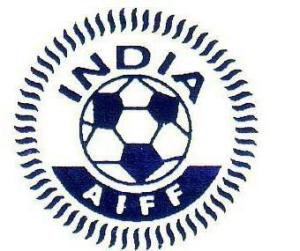 The release of Lakshya 2022 is a sign of AIFF’s good intention to promote football in India. However, it is not the good intentions which cast shadow on the future of the game. It is the approach and the execution of plans which worries an avid India football fan, a football fan who would want to move forward from discussing European football and get inside a ground to support his local team. A lot has been said and written about how Indian football is not exciting and how football grounds are empty. This catch 22 is often used explanation for authorities’ inability to take football in India forward.
The release of Lakshya 2022 is a sign of AIFF’s good intention to promote football in India. However, it is not the good intentions which cast shadow on the future of the game. It is the approach and the execution of plans which worries an avid India football fan, a football fan who would want to move forward from discussing European football and get inside a ground to support his local team. A lot has been said and written about how Indian football is not exciting and how football grounds are empty. This catch 22 is often used explanation for authorities’ inability to take football in India forward.
In my opinion any progress made is a good progress and we need to constantly evolve our plans and listen to every stakeholder including the fans. As a fan and as a keen follower of football management, I too would like to contribute to promotion of football in India.
I have read the “Lakshya 2022” document and I am not impressed (Not that anybody would care). The approach suggested in the document is not the only reason. Even with the suggested approach, there has been no action. For e.g 3 elite academies have been proposed but none have seen any momentum.
The core issues are of course – 1) Development of footballing skills at the youth level & 2) Promoting football to masses and these two issues are interconnected. A successful implementation of the above two can lead to a successful national football team.
Let’s evaluate few important aspects of the document.
1) Premise:
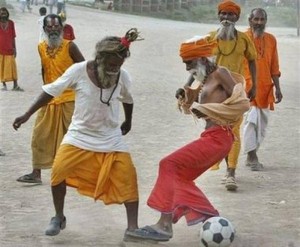
The intention, of course, is to develop football in the country but the approach of developing “Indian style of play” sounds more of marketing than a practical development plan. A country like India cannot have or at-least cannot have style of playing as a starting point. Direct long ball football of the English, “Total football” of the Dutch or the creative style of the South Americans have developed over ages and more importantly these nations had a culture of football. Football was discussed, played, followed and ingrained by masses. For India, a country which has Cricket as the only symbol of their sports culture, a style of football can develop over a period of time. What is required is a focus on developing a pool of technically and physical good crop of players who can fit into various systems and styles. An ideal system for India would be like a German system which has an assembly line of creating good players.
A system should consistently produce GOOD players and not occasional GREAT players. Great individuals will give unreliable results but a good team will perform consistently. In my opinion that should be the starting point.
2) The structure:
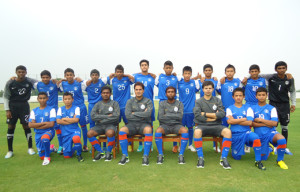
The importance of a good structure cannot be stressed enough. The key ingredients of this structure are well known. We know that we need youth academies, we know that we need certified coaches, we know we need good grounds, we know we need qualified referees and of course good tournaments for various levels. It is the interdependence of each element which will be the key. Now I agree India has a unique set of problems due to its size and we need to come up with our own system or copy a system best suited to us. Lakshya 2022’s approach is a typical Indian policy document with a socialist bent. The association wants to run the entire show. The fascination to Clairefontaine is visible. It would have helped if a paragraph on why such a system is chosen. I agree it would have helped address curiosity of a few but nevertheless it would have been useful. The document suggests that “The AIFF has learnt from the study of other football countries that Elite centres and National academies play a very important role in producing sufficient elite players”. Clairefontaine’s contribution to French football itself is mired with doubts and controversies. The famed 1998 victory which is attributed to the French academy also needs to be scrutinized. That squad was blessed with incredible talent of Zinedane Zidane and in-fact the only academy graduate in the squad was Henry. Most of the players had come from the club academies. The state of the academy is another topic of debate all together but is relevant to Indian system since Indian sporting system is more prone to biases and mismanagement.
What also needs to be assessed is why so many countries follow a club based youth development approach. Germany has mastered it. Barcelona’s La Masia is what everyone aspires to be. Given the huge geography, India should also learn from the efforts of MLS. USA has money and the willingness to develop football. They struggled after initial success but now MLS is growing in popularity and quality. The US National team’s performance has definitely improved over the years. Another successful experiment has been Mexico. All clubs have to field players below 21 years for atleast 45 minutes. Mexico recently won the Olympic gold.
What else….
Lakshya 2022 is a well-made document and has tried to cover all the aspects. What it lacks or so it seems is a wholesome development plan. It is too focused on the National team rather than developing Football. The role of IMG-Reliance, which by the way is mentioned as the one of the three stake holders to drive the change, is questionable. What also is strange is the importance (or rather lack of it) given to club football in the entire document. There is a section dedicated to club development plan but the plan has a “Big Brother” approach. It surprisingly does not link youth development to clubs.
More on Lakshya 2022 in part 2….





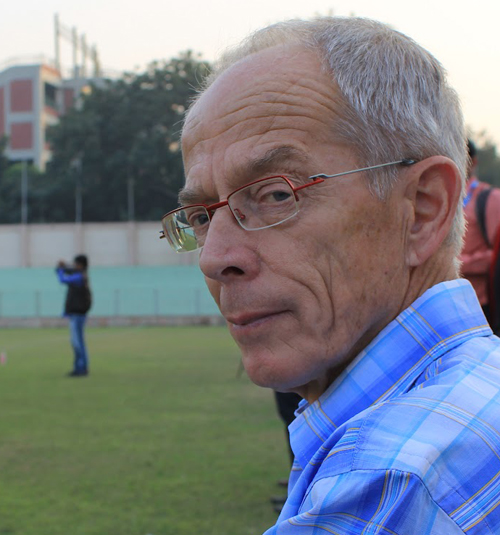
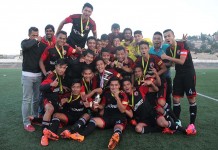
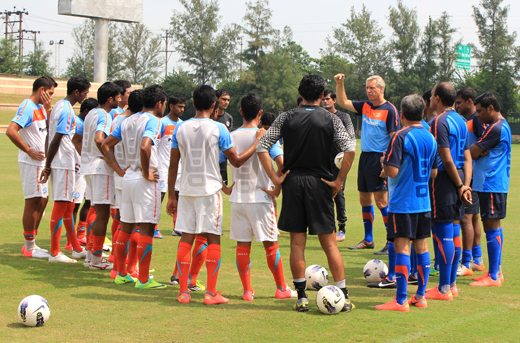

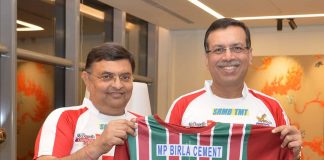

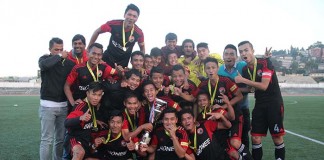
Shailesh Karkera Has the style of play been chosen ? What system/s are coaches being taught ? What kind of philosophy ?
I want to run with Indian team.
Excellent response Shailesh and keep up the good work in the AIFF academy.
Hi Danny,
The Mumbai Academy is preparng for the u-19 AFC Championship 2015.
The Goa Academy (u-13) participated in the recently concluded AFC u-14 Championship.
The Kolkata Academy (u-14) will feature in the AFC u-16 Championship
Hi Shailesh:
Did the academy guys palyed in the just concluded afc u-14 qualifiers in Iran.
Or this guys would be playing the AFC u-16 qualifiers .
Thanks :
Danny Borpatragohain
When you say “developing “Indian style of play” sounds more of marketing than a practical development plan”, on what research is this statement based on?
I have spent the last year working very closely alongside Rob Baan (TD, Youth Development) and Scott O’Donell (TD, AIFF Academies and Coaching Education)and some of the arguments that are made in this piece are plain ludicrous.
First off, Rob has already worked his magic in Australia previously in his post as Technical Director.
The idea behind an ‘Indian style’ of play is essentially to have all teams (schools, colleges, clubs, state, national teams) across all levels following a similar pattern – be it 4-4-2/ 4-3-3/ 4-5-1 etc.
“Lakshya 2022’s approach is a typical Indian policy document with a socialist bent. The association wants to run the entire show.”.
Again, it is absolutely mind-blowing that someone can make such a statement. For one, it is not an Indian policy in any way and secondly, it has nothing to do with the association running the show.
I was present during a round-table conference involving the leading academies in India in Durgapur in Nov 2012, which was telecast LIVE on a Bengali news channel where both Scott and Rob addressed the officials of every academy viz (Mohun Bagan SFA, Sesa Goa, SAI, Tata FA, Sambhalpur FA, IFA Academy Calcutta, MPFA, AIFF Mumbai) Only Chandigarh Football Academy were missing from the line-up of the top residential football academies from the country.
Time and again, Rob stated that the residential academies, – both private and association owned – played a vital role in the development of players. Not the AIFF.
How many I-League clubs in India have their own residential academies? Or if not residential, how many have an u-15, u-17, u-19 and u-21 team that practices throughout the year and not just three months before their tournaments are announced?
I have re-read this article several times and my actual reply would run into several pages but its really not worth the effort. All I can say is that I have been involved in Indian football for just over fifteen years as a player/fan and just over five years in an official capacity and I have been blessed to have been able to work alongside individuals like Rob Baan, Scott O’Donell, Colm Toal, Wim Koverman and Arthur Papas who all have and exemplary work ethic, are extremely professional, meticulous planners and absolutely genuine and humble human beings.
They know that they are here for a reason and that is to improve Indian football however at time with all of the permutations and combinations in the mix, it can get extremely frustrating but they still manage to deliver results.
As for the AIFF Academies, the Mumbai u-15 Academy has now won ten games in row against teams from the top tier of Mumbai football and their last loss was against the Maharashrta Senior Santosh Trophy squad (who reached the semi-finals and lost to hosts Kerala). These are teenagers mind you, who are already head and shoulders above the competition in their age group.
Shailesh Karkera
National Academy Manager, AIFF Academy (Navi Mumbai).
Football Coach, FA Level 2.
Football Referee, Class II, Bombay Referees Association.
When you say “developing “Indian style of play” sounds more of marketing than a practical development plan”, on what research is this statement based on ?
I have spent the last year working very closely alongside Rob Baan (TD, Youth Development) and Scott O’Donell (TD, AIFF Academies and Coaching Education)and some of the arguments that are made in this piece are plain ludicrous.
First off, Rob has already worked his magic in Australia previously in his post as Technical Director.
The idea behind an ‘Indian style’ of play is essentially to have all teams (schools, colleges, clubs, state, national teams) across all levels following a similar pattern – be it 4-4-2/ 4-3-3/ 4-5-1 etc.
“Lakshya 2022’s approach is a typical Indian policy document with a socialist bent. The association wants to run the entire show.”
Again, it is absolutely mind-blowing that someone can make such a statement. For one, it is not an Indian policy in any way and secondly, it has nothing to do with the association running the show.
I was present during a round-table conference involving the leading academies in India in Durgapur in Nov 2012, which was telecast LIVE on a Bengali news channel where both Scott and Rob addressed the officials of every academy viz (Mohun Bagan SFA, Sesa Goa, SAI, Tata FA, Sambhalpur FA, IFA Academy Calcutta, MPFA, AIFF Mumbai) Only Chandigarh Football Academy were missing from the line-up of the top residential football academies from the country.
Time and again, Rob stated that the residential academies, – both private and association owned – played a vital role in the development of players. Not the AIFF.
How many I-League clubs in India have their own residential academies? Or if not residential, how many have an u-15, u-17, u-19 and u-21 team that practices throughout the year and not just three months before their tournaments are announced?
I have re-read this article several times and my actual reply would run into several pages but its really not worth the effort. All I can say is that I have been involved in Indian football for just over fifteen years as a player/fan and just over five years in an official capacity and I have been blessed to have been able to work alongside individuals like Rob Baan, Scott O’Donell, Colm Toal, Wim Koverman and Arthur Papas who all have and exemplary work ethic, are extremely professional, meticulous planners and absolutely genuine and humble human beings.
They know that they are here for a reason and that is to improve Indian football however at time with all of the permutations and combinations in the mix, it can get extremely frustrating but they still manage to deliver results.
As for the AIFF Academies, the Mumbai u-15 Academy has now won ten games in row against teams from the top tier of Mumbai football and their last loss was against the Maharashrta Senior Santosh Trophy squad (who reached the semi-finals and lost to hosts Kerala). These are teenagers mind you, who are already head and shoulders above the competition in their age group.
Shailesh Karkera
National Academy Manager, AIFF Academy (Navi Mumbai)
Football Coach, FA Level 2
Football Referee, Class II, Bombay Referees Association
This article pretends to male rational arguments, but in reality most of these are either straw-man arguments or are based on presumptions that have no data to back them up.